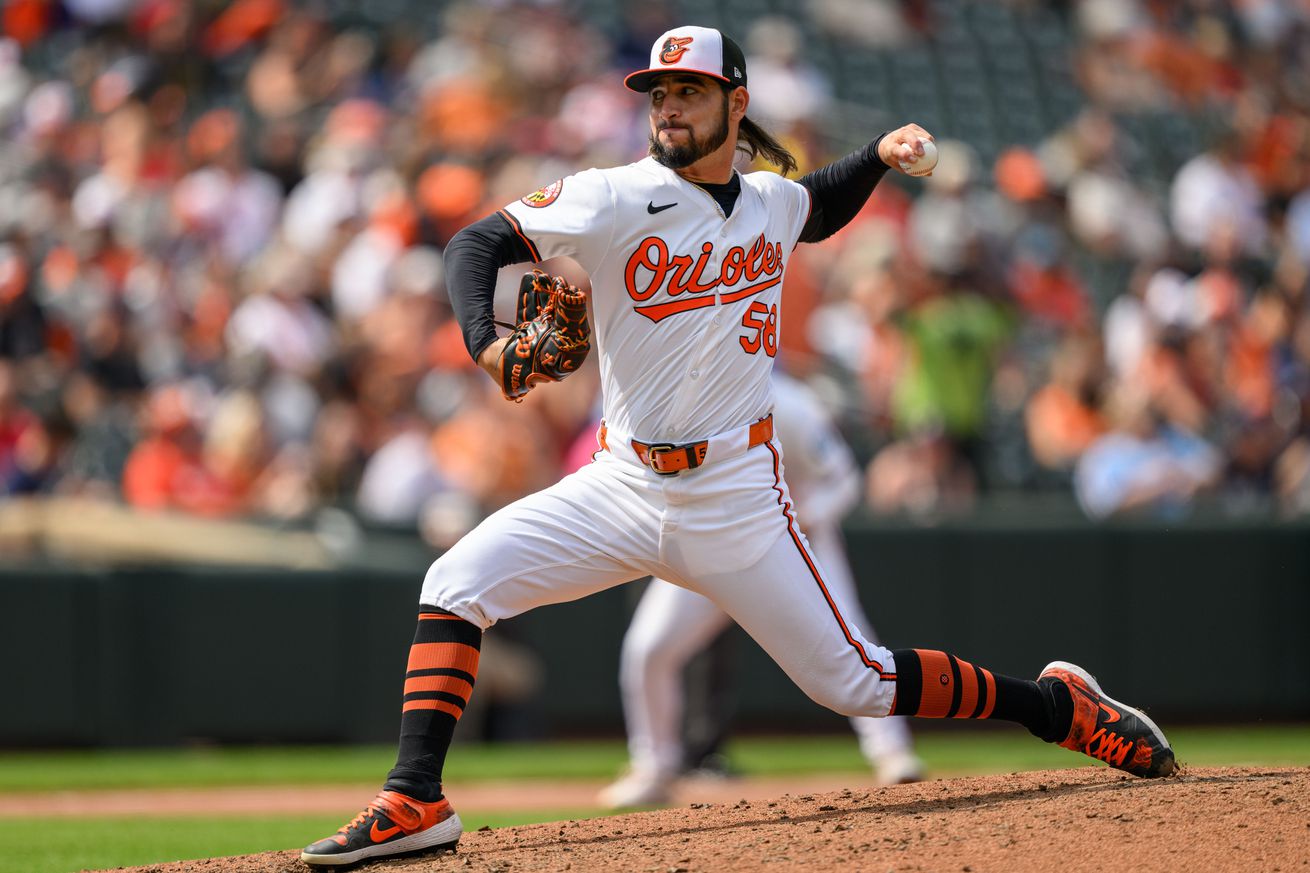
It was a tough year for Cionel.
Cionel Pérez has pitched in 60+ games out of the Orioles bullpen in each of the last three seasons. But only in the first of those, in 2022, did he see sustained success. That year he was a revelation, using a high 90s fastball and very good slider to pitch to just a 1.90 ERA. It feels like in the two years since the Orioles have been trying to recapture that magic. I don’t think it’s going to happen.
I don’t say that lightly because Pérez is an incredibly easy player to root for. He has a very interesting origin story centered around his decision to defect from Cuba, the sacrifices he and his family made, and how he ended up with the Orioles. His emotions on the mound are electric and contagious. And of course, he has an impressive knack for catching Orioles home run balls in his cap from the bullpen. He’s done it six times!
I’d love nothing more than for Pérez to be a perennial stalwart in the Orioles bullpen, but it’s hard for any relief pitcher to have sustained success for multiple years. So what happened with Cionel Pérez this year to lead him to an unsightly 4.53 ERA and a -0.2 bWAR in 62 games pitched? And what part of it was out of his control?
Pérez’s season got off to a very rough start when, on March 30, he had to come out of the game after facing just two batters. It was a right oblique strain for Pérez. He went to the IL and didn’t return until April 29. After that, though, he was the model of consistent use. He pitched between 10-15 games in every month from May through September.
One way in which Pérez sabotaged himself throughout the year was with his walks. He had stretches without too many walks but you never knew when it was going to hit. He ultimately had a walk rate of 11.8%, or 4.7 walks per nine innings. That’s the highest rate on the 2024 Orioles among regular pitchers except for Craig Kimbrel, who was released. When you’re expected to be a high-leverage relief pitcher, that’s just too many walks. This is especially true for Pérez because he had a pedestrian K/9 of just 7.7.
If you watched Pérez pitch this year, you may anecdotally feel like his defense let him down from time to time. That’s not an untrue fact as evidenced by his FIP of 3.30. That number is certainly influenced by the fact that Pérez did not allow a single home run all year. That’s not an unusual number for him, either. In 2021 and 2022 he gave up just two home runs in each year.
A pitcher who keeps the ball in the park effectively will always have value. A pitcher with a 1.358 WHIP, which was Pérez’s stat in 2024, is a bit of a harder sell. The question is does his tendency to keep the ball in the park erase the nearly two baserunners he puts on in an inning?
Yes and no. Pérez’s LOB numbers this year were just 60.8%, his worst as an Oriole and third-worst on the team behind Kimbrel and Burch Smith. At least they weren’t scoring on home runs?
Through the first few months of the year, Pérez put up pedestrian numbers for the team. His outings were usually clean from a runs perspective, but he almost always had traffic on the bases via hit or walk. It’s hard to stay confident in a pitcher who allows baserunners nearly every time he comes in. When he did allow runs it was often multiple runs and by the end of June his ERA sat at 4.13.
Pérez’s finest month of the year came in August, which was also his most used month (15 games). His walks were still up, eight in 12.1 innings, but he struck out 10 and held his opponents to a .167 batting average. With the Orioles coming into the home stretch of the season that had already been disappointing for a few months, having Pérez finish out strong would be a boon for the team.
But then came September and it was ugly. Just three of his nine games were clean outings and the rest were simply awful. In four games he gave up multiple runs and he finished with a nine ERA for the month. Unfortunately, this is the Cionel that is freshest in my mind. That and his postseason appearance, of course.
In game two of the Wild Card game, Pérez came on in the sixth inning of a tied game and allowed two singles, one in the infield. Of course, the first runner came around to score what ended up being the winning run in the game where the Orioles were eliminated.
What does 2025 hold for Cionel Pérez? He is arbitration eligible and MLB Trade Rumors projects him to receive $2.2 million. The Orioles hold a $2.3 million option on him, which I expect them to exercise rather than going through an arbitration process to save a few bucks.
I know it seems like I just spent the last 900 words or so explaining why Pérez was bad this year. But he is a lefty with a mid-90s fastball who keeps the ball in the ballpark and if he can control his baserunners he could be in store for a big year in 2025. That’s a big if, but it’s one that is worth taking a chance on. Unless I too am still hung up on 2022.
Previous 2024 player reviews: Keegan Akin
Tomorrow: Cole Irvin